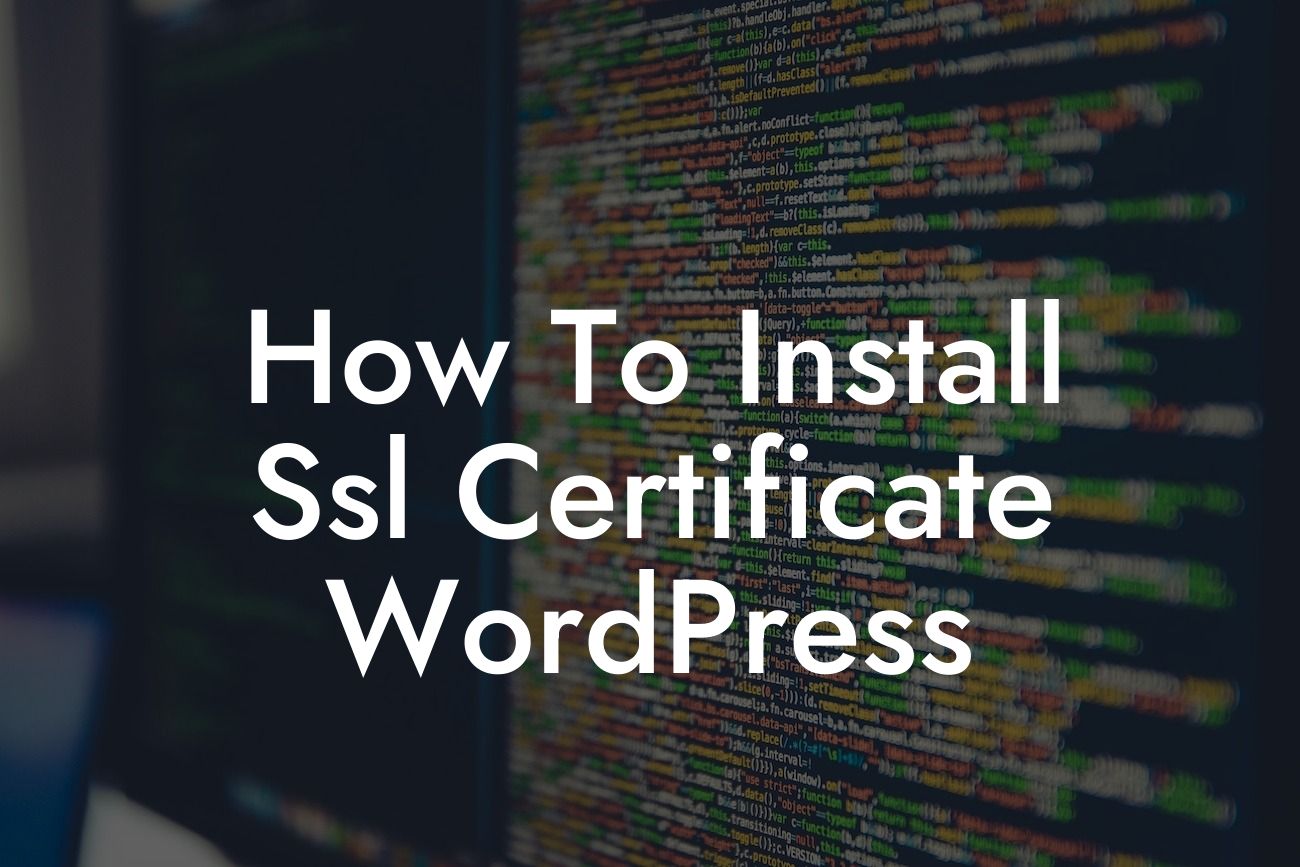Securing your WordPress website with an SSL certificate is not just a good idea, it's absolutely essential in today's online landscape. Your customers entrust you with their personal information, and by installing an SSL certificate, you not only safeguard their data but also build trust and credibility for your business. In this guide, we will take you through the step-by-step process of installing an SSL certificate on your WordPress website. Get ready to supercharge your online success!
Engaging H2 Heading: What is an SSL Certificate?
Detailed content: An SSL certificate is a digital file that adds an extra layer of security to your website by encrypting the data exchanged between your server and the user's browser. This encryption protects sensitive information, such as login credentials, credit card numbers, and personal details, from being intercepted by malicious attackers. When an SSL certificate is installed, it activates the padlock icon and the "https" in the URL, indicating that the connection between your website and the user is secure.
Engaging H2 Heading: Choosing the Right SSL Certificate
Detailed content: There are various types of SSL certificates available, ranging from basic to advanced. Before installing an SSL certificate, you need to determine your specific requirements. If you run a simple blog or a basic website without any e-commerce functionality, a domain-validated (DV) certificate might suffice. However, if you handle sensitive customer information or conduct online transactions, an organization-validated (OV) or an extended validation (EV) certificate would be more suitable. Remember, the higher the validation level, the more trustworthy your website appears to visitors.
Looking For a Custom QuickBook Integration?
Engaging H2 Heading: Purchasing an SSL Certificate
Detailed content: You can purchase an SSL certificate from reputable certificate authorities (CAs) like Comodo, DigiCert, or GeoTrust. It's crucial to choose a trusted CA that provides strong encryption and has a solid reputation. When selecting an SSL certificate, consider factors such as the warranty offered, support provided, and the CA's validation process. Additionally, ensure that the certificate is compatible with your hosting provider and that it covers all the domains and subdomains you need to secure.
Engaging H2 Heading: Installing the SSL Certificate
Detailed content: The process of installing an SSL certificate may vary depending on your hosting provider. Most hosting providers offer a simple one-click installation feature, making it easy for WordPress users. However, if your hosting provider doesn't offer this feature, you can manually install the certificate by generating a certificate signing request (CSR) and then following the specific instructions provided by your hosting provider. A detailed step-by-step guide for both scenarios can be found on DamnWoo's blog.
How To Install Ssl Certificate Wordpress Example:
Let's consider a small business owner named Sarah who runs an online store using WordPress. To build trust with her customers and protect their personal information, Sarah decides to install an SSL certificate. She carefully selects a domain-validated (DV) certificate from a reputable CA and follows the simple instructions provided by her hosting provider. Within minutes, her website now displays the padlock icon and the "https" in the URL, giving her customers the peace of mind they deserve.
Congratulations! You have successfully installed an SSL certificate on your WordPress website, reinforcing the security of your online presence. Remember to regularly update and renew your certificate to ensure continuous protection. Feel free to explore other user-friendly guides on DamnWoo to take your website's functionality and performance to the next level. Don't forget to try out our awesome WordPress plugins designed exclusively for small businesses and entrepreneurs. Share this article with others who would benefit from securing their websites and protecting their customers' data. Together, let's create a safer online environment!













